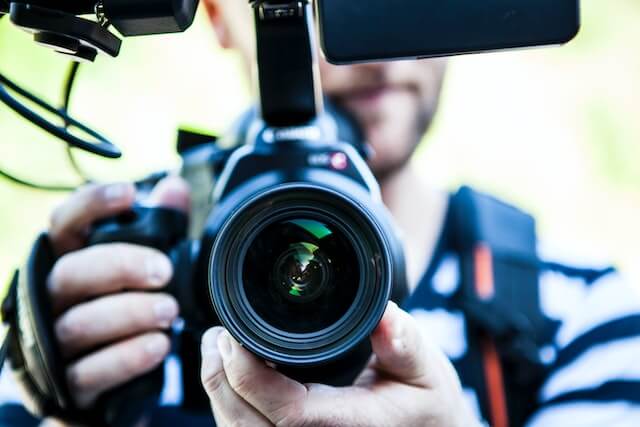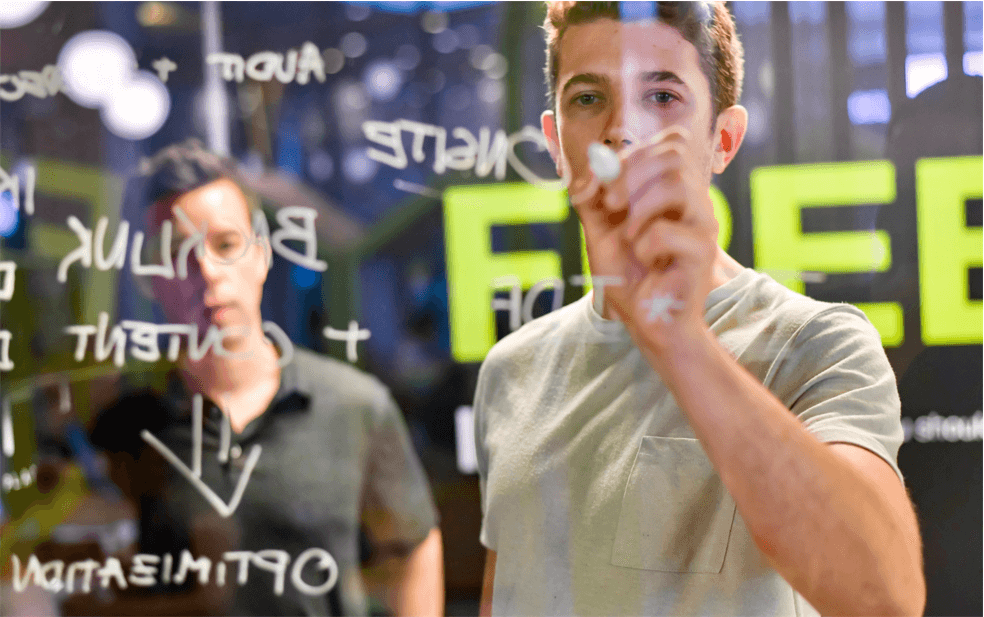They are a way for businesses to grab public attention for free, instead of spending money on typical advertisements. They also add a dose of trustworthiness. Because the media coverage of these events isn’t directly paid for, it comes across as more credible.
Gather the right team
Even if you’re a pro event planner, it helps to have a reliable team of fellow professionals. They can help you bounce ideas, prevent bad decisions, and execute the whole thing. As the main planner, your job is to handle the details behind the scenes and make sure it all goes smoothly the day of.
An assistant planner can help you with the backdrop, such as catering, audio-visual devices, choosing the best pull-up banners and other conference equipment, and so on. That way you can focus on organizing the itinerary, check-in, accommodations, procuring the best venue, etc.
A PR manager can save you some effort in reaching all the right people. They can contact the key people in your target media outlets, desire sponsors for the event, and secure advertisers. Post-event, a marketing specialist can share your coverage via different channels. This way your event gets maximum reach and achieves the greatest possible impact.
Choose the right format
As with any event, media happenings come in various formats and styles. It all depends on the needs of your client, their preferred aesthetic, and the goals they want to achieve. That said, a few types of media events stand out as the most effective.
Press conferences are a very common way of distributing official information to many media outlets at once. The best thing about this event format is its real-time questions-and-answers capacity.
A press conference lets you immediately address any unclarity, concerns, or potential criticism that might stem from the initial announcement. It’s a great way to prevent damage to the brand and control the narrative.
This event format is perfect for:
- Addressing PR issues
- Announcing new products and campaigns
- Presenting breakthroughs
- Sponsoring a cause
- Announcing major company changes
- Celebrating acquisitions
Awards ceremonies are exactly what it says on the tin. Individuals or groups are awarded prizes, trophies, etc. for their achievements. These are formal or semi-formal affairs. Awards ceremonies can be held by a company for its employees, or industry-wide for several companies.
Product launches are specifically designed debut events. The debutante is an item or service, rather than a person. They usually feature a lot of buildups prior to the event itself and can be “soft” or “hard”. Soft launches give first access to a small subgroup of the target audience. A hard launch releases the product to the whole open marketplace.
Photo ops revolve around public figures, i.e. celebrities, politicians, or other noteworthy individuals. More recently, they started being used for products too. These media events invite the viewers to participate by having their photos taken with the person or thing. Nowadays they can also be utilized by companies to portray their upper leadership in a favorable light.
The goal and the message
The best events are planned with the end goal in mind from the start. Consider your general intent: launching a product, raising brand awareness, or furthering a cause. How can you measure that?
Come up with quantifiable benchmarks for your event. This way you can assess it as it unfolds. It will give you a clear image of your overall success, what went well, and what needs improvement in the future.
Once you know your goals, craft an enticing message to communicate them. Consult with your marketing team and PR manager. Create a message that grabs attention, keeps your audience engaged, and resonates well with your target demographic. For extra emotional impact, incorporate storytelling strategies.
Draw attention

It’s a media event, so get the media’s attention. These are the essential steps in doing that:
First, send out a press release as a heads-up. The media will then decide whether your event is with their coverage. Keep it succinct. Include the relevant details without much hype. This is not where you do your marketing. reports receive many press releases daily, so you have to be efficient.
Next, prepare a press kit. You want the media to get a positive impression of your company. Create a professional press kit they can take when they leave. The kit information is used in their stories, so it also affords you partial control over what gets reported.
Mind the scheduling throughout. Your event has to be at a time that’s convenient for the media if you want any press to actually show up. Reporters generally have evening deadlines, so mornings or early afternoons are best. Also, check out your local community pages. Avoid clashing with any other big event that might steal attention from your own.
In summary, you have to understand the event goal before anything else. That enables you to choose the optimal format, craft the best message, and gather the right people for the job. Be strategic in how you get the media’s attention, and set measurable success benchmarks that you can monitor.















